
The Health Benefits of Touch and the Power of Engaging with Natural Materials in Art
24-06-2025Touch is one of the most fundamental human senses, shaping our perception of the world. Scientific studies confirms that touch plays a crucial role in emotional well-being, stress reduction, and cognitive function.
One of the most significant benefits of touch is its ability to reduce stress and anxiety. Research has shown that tactile engagement can trigger the release of oxytocin, a hormone linked to relaxation and emotional bonding.
Engaging with sculptures made from natural materials such as wood, clay, or metal can provide a grounding experience.
The warmth of wood, the cool firmness of metal, or the textured surface of hand-glazed ceramics can foster a sense of presence and mindfulness. This tactile connection to natural materials stimulates sensory receptors in the skin, which communicate with the brain and nervous system to create calming effects.
Museums and galleries have traditionally discouraged touching artworks, yet contemporary approaches to interactive sculpture recognise that hands-on experiences can amplify the viewer’s emotional and intellectual connection to the piece.
One example of this was by Szubielska & Niestorowicz (2020), in which they conducted a behavioural experiment indicating that blindfolded touch of artworks produces greater pleasure than when vision is involved, underscoring the deep psychological benefits of unmediated touch.
Our work at Giles Miller Studio celebrates the power of touch in art and design. We create sculptural artworks that invite interaction, utilising natural materials such as wood, metal, and ceramics.
Our installations often incorporate textures that encourage both visual and tactile engagement. By working with organic materials, we harness the inherent warmth and tactility of wood, the structured fluidity of metal, and the grounding solidity of ceramic. These materials have an innate ability to connect with human senses, making these pieces not just visually appealing but also deeply experiential.
The integration of touchable natural materials in art holds therapeutic potential, offering an antidote to modern-day stress and digital fatigue.
As more artists and designers explore this sensory dimension, the value of engaging with sculpture through touch becomes increasingly recognised, not just as an artistic experience but as a means of fostering mental and physical well-being.
It is our hope that our work stands as a testament to this principle, demonstrating that the fusion of natural materials and interactive design can elevate both aesthetic appreciation and human health.
by William Lee, Lead Designer at Giles Miller Studio
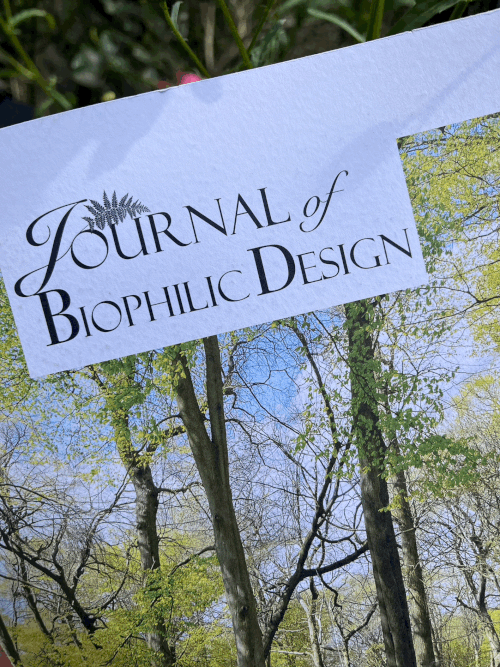
Contributing Article, Journal of Biophilic Design, May 2025
12-05-2025The Vital Role of Light in Art and Wellbeing, by Giles Miller
In the world of art, light is not merely a means of visibility – it is an active and essential participant in the experience of any artwork. At Giles Miller Studio, light is a major consideration in every piece we create. Our philosophy embraces the idea that artworks should exist in perfect harmony with their surroundings, adapting to the perspective of the viewer and the ever-changing play of light throughout the day.
Light, whether natural or artificial, influences the way an artwork is perceived. Shadows, highlights, and reflections breathe life into the composition, creating a dialogue between the piece and its environment. We see light as a collaborator, shaping and evolving the way our works are experienced over time. It is this dynamic interaction that allows our work to transcend static form, becoming something that is felt as much as it is seen.Another cornerstone of our creative process is the incorporation of natural materials. The composition of natural materials such as wood, metal, or ceramics brings an inherent sense of calm and grounding to the viewer. These materials, when carefully and considerately composed, interact beautifully with light, casting dynamic shadows and subtle shifts in tone that change with the passing hours. This interplay between form, material, and illumination contributes to an artwork that is not static but fluid – an evolving visual and emotional experience.
Beyond materials and light, our studio’s approach is rooted in the arrangement of elements in a manner inspired by the fractals and biophilia found in nature. We often compose our works from masses of components, allowing nature’s influence to guide us in shaping them into cohesive, rhythmic patterns. This careful orchestration creates a sense of movement and depth, offering the viewer an emotional lift. The combination of organic materials, structured composition, and the vital role of light enhances the immersive quality of our artworks, making them more than just objects – they become experiences.
Artistic purpose, at least within our own studio’s practice, extends beyond form and aesthetics – it is about the human experience. Neuroscience has proven art’s ability to promote wellbeing, validating our mission to create works that positively impact those who engage with them. Art has the ability to communicate with and unite our senses, evoking emotions ranging from pleasure and awe to comfort and serenity. This sensory impact is something we study, channel, and perpetuate through our work. We call it Sensory Artistry.
Our artworks are designed to heighten awareness of the surrounding environment and one’s own emotions. Through careful composition, natural materials, and the transformative power of light, we create immersive experiences that go beyond visual appreciation. Light is the force that breathes life into these compositions, altering their appearance and emotional resonance throughout the day.
This dynamic relationship between light, material, and structure is what makes our work effective in fostering wellbeing. By designing artworks that evolve with the light, we encourage moments of reflection, tranquility, and emotional upliftment. Just as natural light shifts with the seasons, our works respond to their environment, forming a living, breathing connection between art and its audience.
Ultimately, light is not just an external factor – it is an intrinsic force that transforms and elevates our experience of art. Through sensory artistry, we seek to harness this power to create artworks that are not only visually captivating but deeply enriching to the human spirit.
It follows that the significance of light extends far beyond the realm of art. It is a fundamental consideration in any designed space – whether architectural, interior, or landscape design – where the goal is to foster a sense of wellbeing. The same principles that guide our work in the studio – harmony with the surroundings, interaction with changing light, and the emotional resonance of materials – can be applied to all environments where people live, work, and gather.
A well-designed space that thoughtfully integrates light can transform mood, enhance focus, and promote relaxation. Natural light, in particular, has been shown to improve mental health, increase productivity, and establish a deeper connection between individuals and their environment. Architects, designers, and urban planners must recognise light as more than a functional necessity; it is a medium through which space is activated and experienced.
By embracing the power of light in our surroundings, we can create environments that uplift, inspire, and heal. Whether through art, architecture, or design, light remains a fundamental force – one that shapes our emotions, our interactions, and ultimately, our sense of wellbeing.
References:
Natural Light in Interior Architecture: Enhancing Mental Health by Alireza Negarestan
Viewing Art Boosts Wellbeing by Fiona Tyrell
https://en.wikipedia.org/wiki/Neuroesthetics

Research work by Dr Katie Gaudion
21-08-2024Katie is a Senior Research Associate at The Helen Hamlyn Centre for Design in London. She has undertaken research work with GMS independently, and is a Design Researcher who has spent over 14 years working with neurodivergent people, who may have a unique way of thinking and experiencing the world. Her research largely investigates how design can improve the physical environment for autistic people. Katie develops tools that connect, communicate and engage with autistic people and their support network, to enable them to be active participants in the design research.
Katie is the first Research Associate to have completed a PhD by practice at the Helen Hamlyn Centre for Design. The PhD explored how autistic adults with additional learning difficulties experience their home environment. Katie has since put her ideas into practice in a wide variety of contexts, such as supported living accommodation, workplaces, sensory environments, educational institutions, health clinics, and hospitals. Her work has been published and presented internationally.
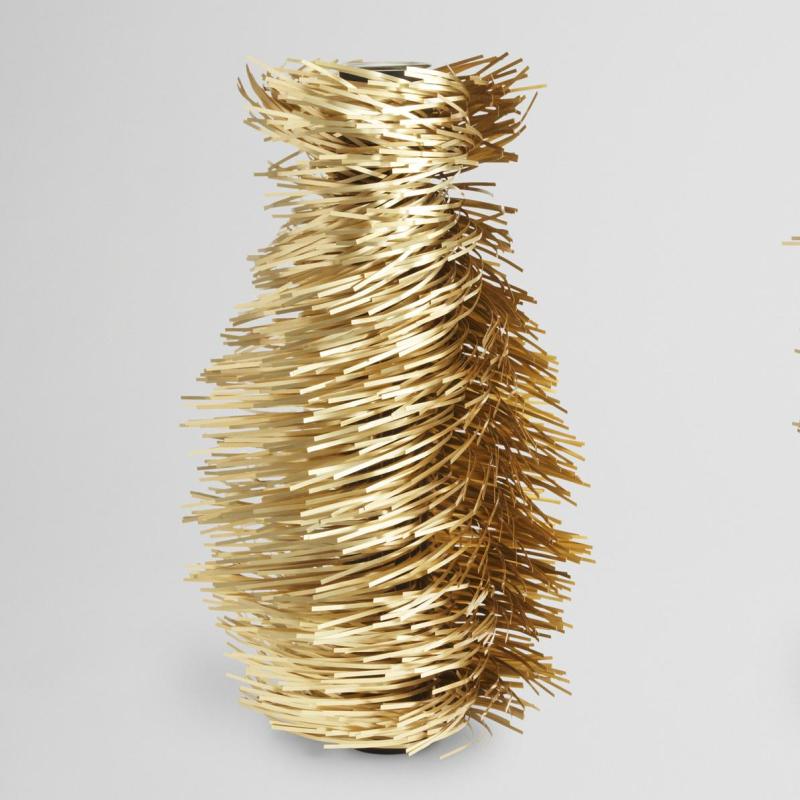
FORM, FUNCTION, FEELING
21-08-2024Our interaction with the environment is in constant dialogue, woven with sensory cues that encompass texture, sound, smell, taste, colour, geometry, and space, both natural and manmade. Every element within our physical surroundings emanates sensory data, engaging our senses in a symphony of perception. Take, for instance, the simple act of boiling an egg: the sight of water poured into a saucepan, the sound of the stove igniting, the anticipation of boiling water, the aroma wafting through the air, the sensation of the eggshell under fingertips, and finally, the taste upon consumption. Designed objects, throughout this process, serve as conduits of sensory stimulation, eliciting our responses.
Throughout history, human civilisation has shaped its environment through design, influencing our actions, emotions, and behaviours. A car facilitates transportation, a chair offers respite, and a child’s toy brings joy. Yet, the objects that populate our spaces are influenced by a myriad of factors; culture, values, abilities, preferences, and resources, resulting in environments that may not always align with everyone’s needs and desires.
GMS believes that design transcends form and function; it also evokes feelings and emotions, often revealed only after objects have integrated into our environments. In the field of design, GMS recognises the significance of sensory qualities of surface, sculpture, and architecture that can shape our interaction, perception, and emotional response to them. Embracing a multi-sensory approach, GMS’s design palate consists of natural light, textures, materials, patterns, colours, and acoustic design to craft environments that fulfil both functional and emotional needs. Their ambition lies in considering the entire spectrum of human senses during the design process, with the aim to “design for experience not just appearance.”
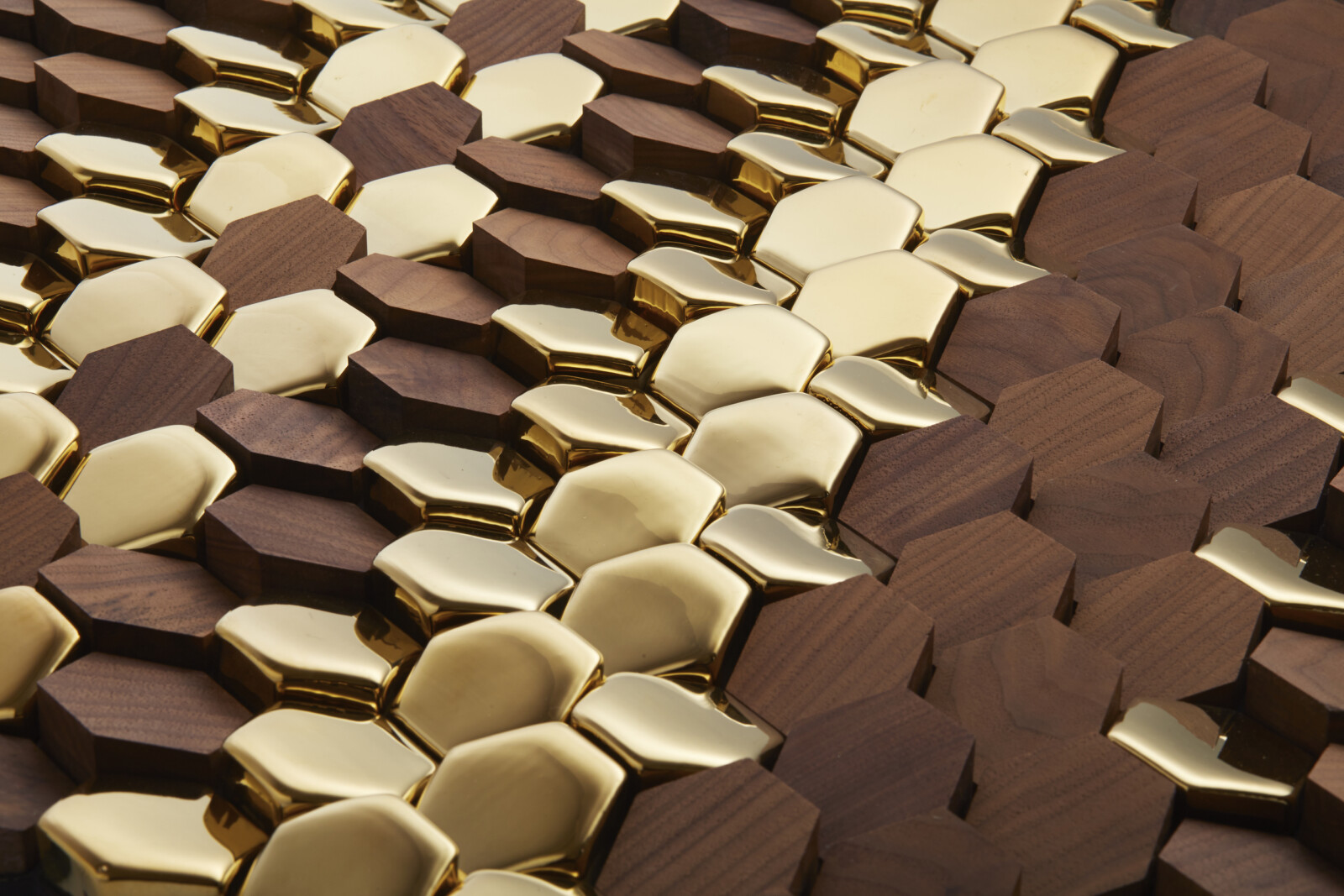
MATERIALITY
21-08-2024In design, materiality with its array of textures, finishes, and compositions, captivates and communicates with the senses in subtle yet profound ways. GMS’s exploration of materiality invites people to engage through their senses. GMS’s process of experimentation combines traditional handmade techniques with cutting-edge technologies to push the boundaries of what is possible. The textures, colours, and forms of GMS designs create immersive sensory experiences that uplift.
GMS work is materials-led, and the choice, combination and orientation of materials imbue spaces, sculptures and surfaces that become conduits for expression. For example, smooth, textured ceramic shapes speaks of warmth and authenticity, while matt metal surfaces evoke notions of modernity and sophistication.
“The careful use of material can evoke tactility as the viewer (or occupant) imagines or mentally simulates what it would feel like to reach out and touch or caress an intriguing surface.” Sigsworth, 2019;
“Vision reveals what the touch already knows. We could think of the sense of touch as the unconscious of vision. Our eyes stroke distant surfaces, contours and edges, and the unconscious tactile sensation determines the agreeableness or unpleasantness of the experience.” (Pallasmaa, 1996).
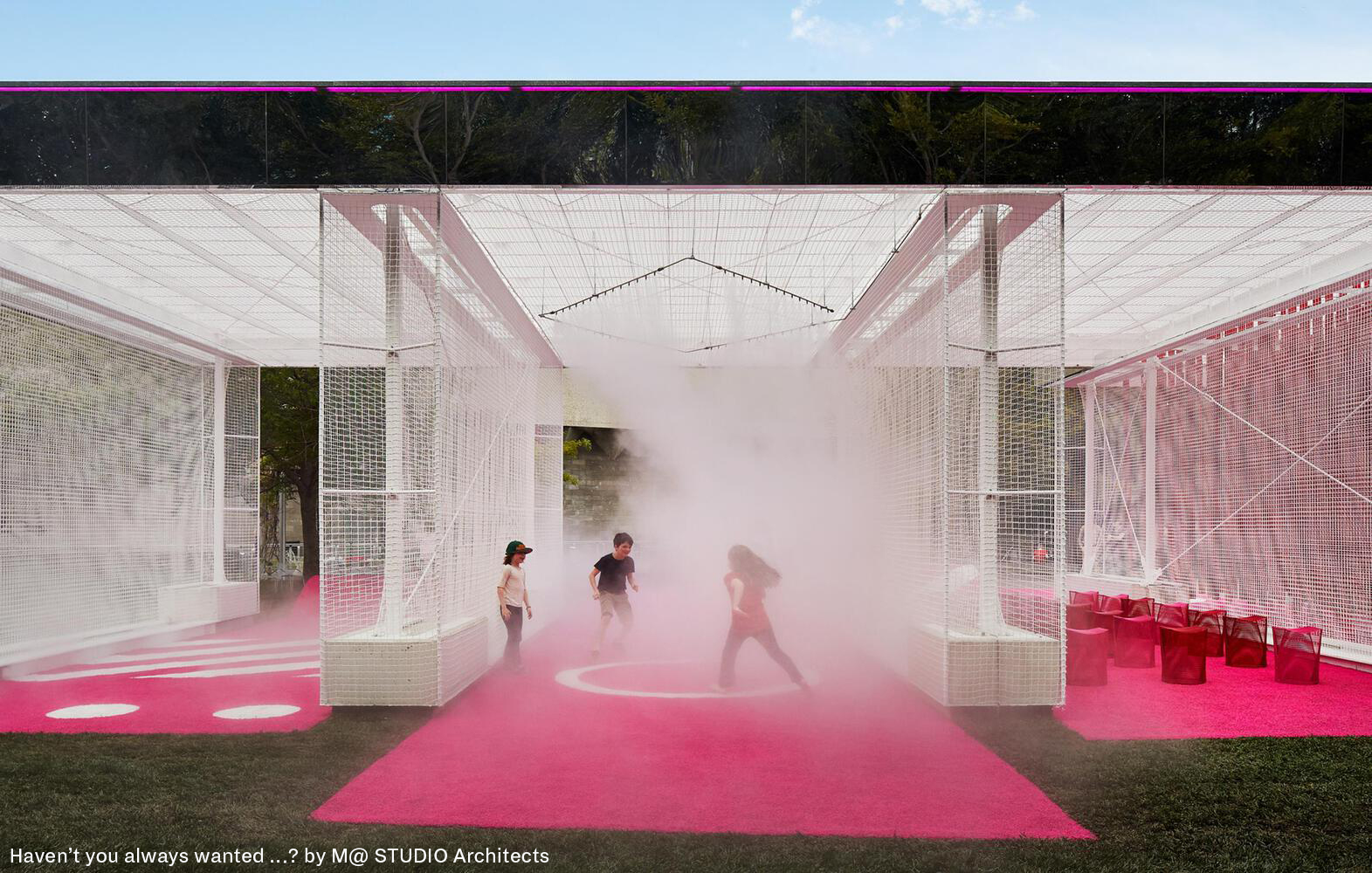
MULTI-SENSORY DESIGN
21-08-2024Researchers in the realm of environmental psychology have long emphasised the profound impact of sensory features within the built environment. The influential modernist architect Le Corbusier (1948) famously asserted that architectural forms “work physiologically upon our senses.”
Since the late 1990s, there has been a notable surge in publications dedicated to rehabilitating the sensory experience within built environments. Notably, Joy Malnar and Frank Vodvarka’s seminal work “Sensory Design” (2004) and Juhani Pallasmaa’s influential book “The Eyes of the Skin” (2005) have contributed significantly to this discourse. In 2002, Charles Spence conducted research in response to concerns about technology and modernization, culminating in “The ICI Report on the Secret of Our Senses.” Spence highlighted the shift from an outdoor, physically engaging lifestyle to an indoor, sedentary one, underscoring the importance of a balanced sensory diet for overall well-being. Spence went on to write Senses of place: architectural design for the multisensory mind (2020), which provides a summary of the role of the human senses in architectural design practice.
The impact of sensory qualities on health and well-being has been recognised across various environments, from hospitals and homes to offices and gyms (Spence, 2002, 2003, 2021; Spence & Keller, 2019). There is a growing acknowledgment of the significance of non-visual senses in design across disciplines (Haverkamp, 2014; Lupton & Lipps, 2018; Malnar & Vodvarka, 2004). Pallasmaa (2000, p. 78) echoes this sentiment, emphasising that “Every significant experience of architecture is multi-sensory; qualities of matter, space and scale are measured by the eye, ear, nose, skin, tongue, skeleton and muscle.” Pallasmaa also goes on to explain that all the senses are related to each other. By designing to orchestrate the senses, users can experience their spaces, feel represented in them, and gain a sense of intimacy and belonging (2011).
This growing body of research about sensory design emphasis’s the significance of incorporating all senses in architectural and environmental design. By recognising and including the various sensory experiences involved in human perception, we can develop spaces that not only look good but also promote the overall well-being of the people who use them.

MOVEMENT
21-08-2024Fractal geometry is utilised in GMS to craft rhythmic patterns that evoke a sense of motion and energy. This feeling of movement and fluidity is further accentuated by using materials that reflect and refract light. Manipulating light, shadow, and depth can significantly enhance the perception of movement, particularly as light and shadows evolve throughout the day.
Shadows and darkness are essential to determine depth and distance. “In great spaces of architecture, there is a constant, deep breathing of shadow and light; shadow inhales, and illumination exhales, light.” (Pallasmaa).
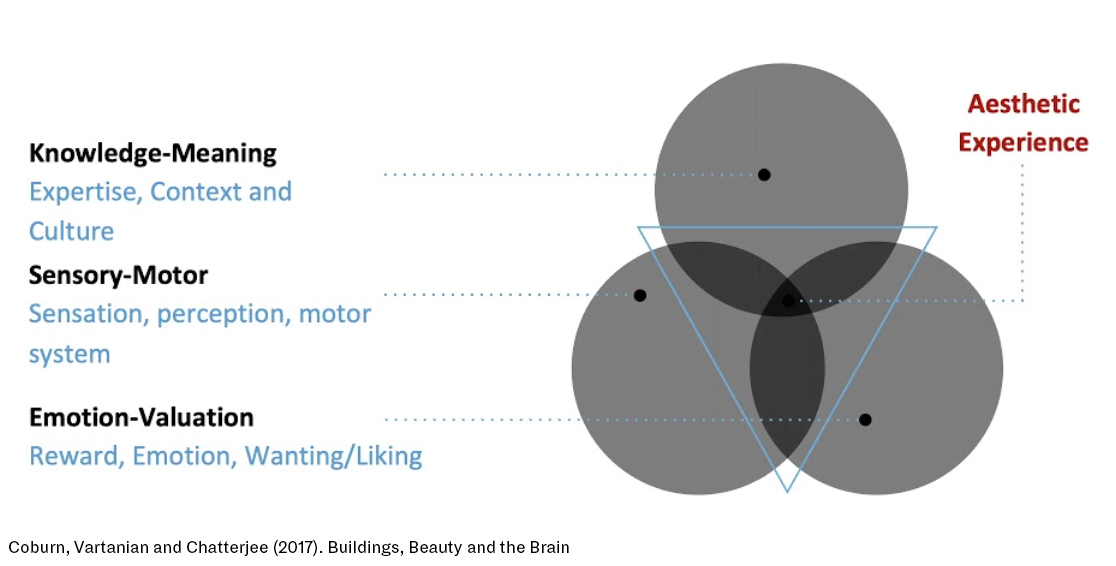
NEUROSCIENCE AND ARCHITECTURE: AESTHETIC TRIAD
21-08-2024The neuroscience of architecture is just beginning to advance knowledge about how and why specific architectural features affect people. Recent years have seen a surge in scientific interest in the neuroscience of architecture (Choo et al., 2017; Coburn et al., 2017; Marchette et al., 2015; Robinson and Pallasmaa, 2015; Vartanian et al., 2013).
The aesthetic triad, consisting of knowledge meaning, sensory-motor experiences, and emotion valuation was developed for neuroaesthetics (Chatterjee and Vartanian 2014, 2016), reformulated for architecture (Coburn et al. 2017). It provides a comprehensive framework for understanding and analysing the aesthetic aspects of design. Each component of the triad plays an important role in shaping how people perceive and interact with design objects, spaces, and experiences. By considering knowledge meaning, sensory-motor experiences, and emotion valuation, designers can create designs that not only engage the intellect but also stimulate the senses and evoke emotional responses, ultimately enriching aesthetic experiences.
The sensory-motor system: The sensory-motor dimension of the aesthetic triad focuses on the multisensory aspects of aesthetic perception and the physical interactions between individuals and designed objects or spaces. This dimension encompasses sensory experiences such as sight, touch, sound, and even movement. Design elements such as form, texture, materiality, lighting, and spatial composition engage the senses and elicit physical responses from users.
The brain’s knowledge-meaning: At the core of the aesthetic triad is knowledge meaning, which encompasses the cognitive and intellectual aspects of aesthetic perception.
The emotion valuation refers to the affective dimension of the aesthetic triad, focusing on the emotional responses and subjective perceptions elicited by a design. This dimension encompasses the range of emotional experiences evoked by design elements, including feelings of pleasure, awe, serenity, excitement, or nostalgia.

NEUROSCIENCE AND ARCHITECTURE: FASCINATION; COHERENCE; HOMINESS
21-08-2024Previous research (Coburn et al., 2020; Weinberger et al., 2021) has delineated three dimensions along which people’s psychological and neural responses to the built environment can be understood. These dimensions include coherence, the organization and legibility of a space; fascination, a complexity that invites exploration; and hominess. the sense of comfort and belonging within a space. Incorporating Coburn’s principles of coherence, hominess, and fascination in the design process is paramount for creating spaces that are not only functional but also emotionally engaging.
Prioritising coherence, designers create environments that are harmonious and balanced, creating a sense of order and tranquillity. By embracing hominess, designers cultivate spaces that feel warm and welcoming, creating a sense of comfort and belonging. By infusing spaces with elements of fascination, environments can inspire curiosity, spark imagination, and engage the senses, prompting meaningful interactions and experiences.
Ruth Dalston: We have now established a list of building design features, supported through neuroscience research, that appear to produce strong, positive emotions in people: fascination; coherence; hominess; unusualness; spatial complexity; curvaceous forms; views of nature and spaces for social encounter.
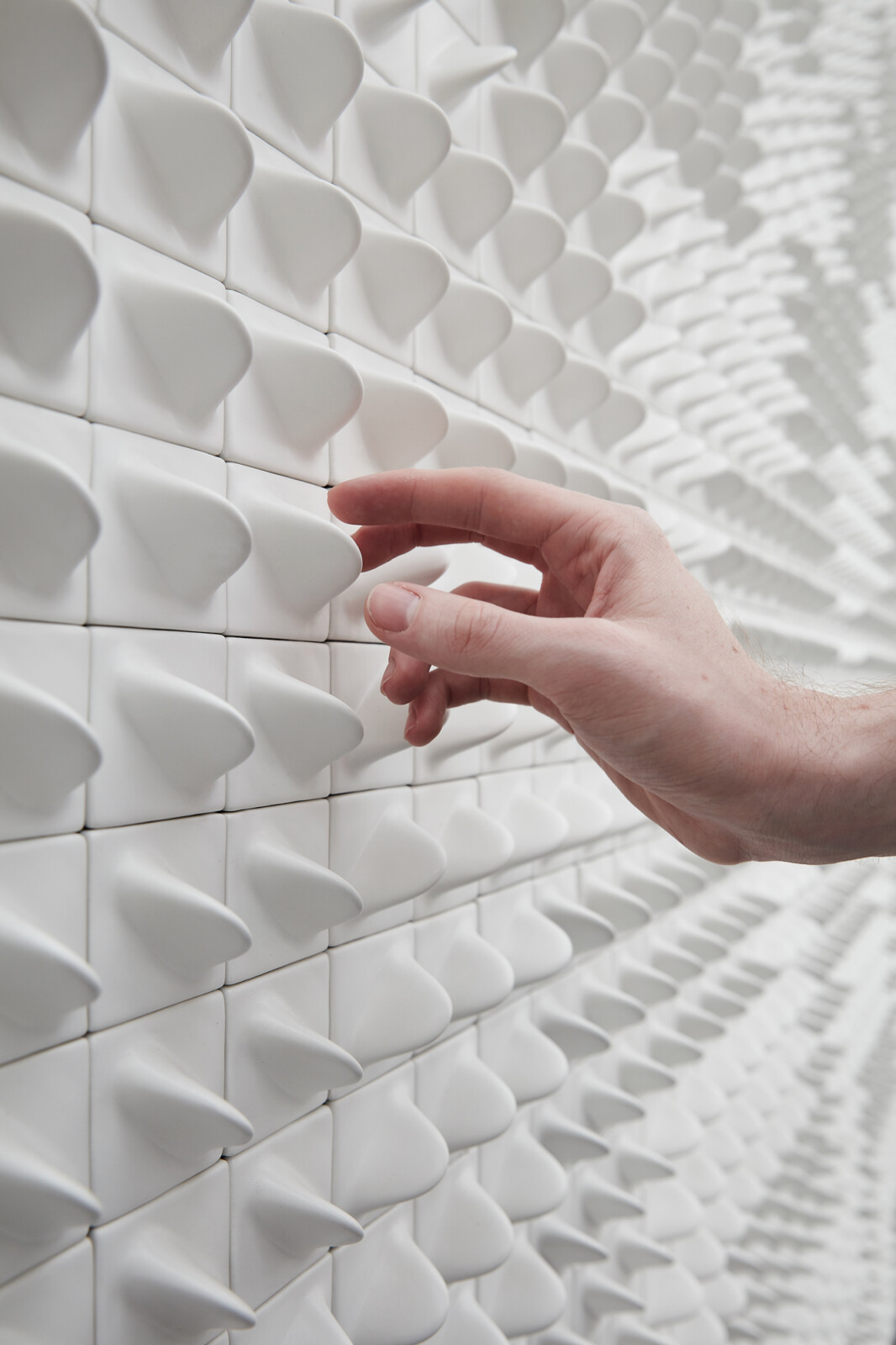
SHITSUKAN
21-08-2024Shitsukan, a term deeply embedded in Japanese culture, embodies the essence of tactile sensation and material quality within the field of design. It describes how the human brain perceives and evaluates the quality of materials, encompassing properties such as glossiness, texture, and composition, whether it be metal, ceramic, or wood.
In contrast to conventional design approaches that prioritise visual aesthetics and functionality, embracing Shitsukan expands the sensory spectrum, elevating the human experience and creating positive emotional responses. Textures, surfaces, and material choices become dynamic elements that invites individuals to engage with their environment on a tactile level. Whether encountering the smooth, cool surface of polished metal or the inviting warmth of natural wood grain and ceramics, each tactile interaction enriches the spatial experience, adding layers of depth and sensory richness.
The integration of Shitsukan into the design process is a catalyst for creativity and innovation, which encourages GMS to explore new materials, textures, and sensory interactions. By carefully selecting durable, environmentally friendly materials with pleasing textures, GMS crafts spaces, sculptures and surfaces that endure the test of time while minimising ecological impact. This approach at GMS not only promotes sustainability but also enhances the overall quality and sensory appeal and emotional connection of their designs.
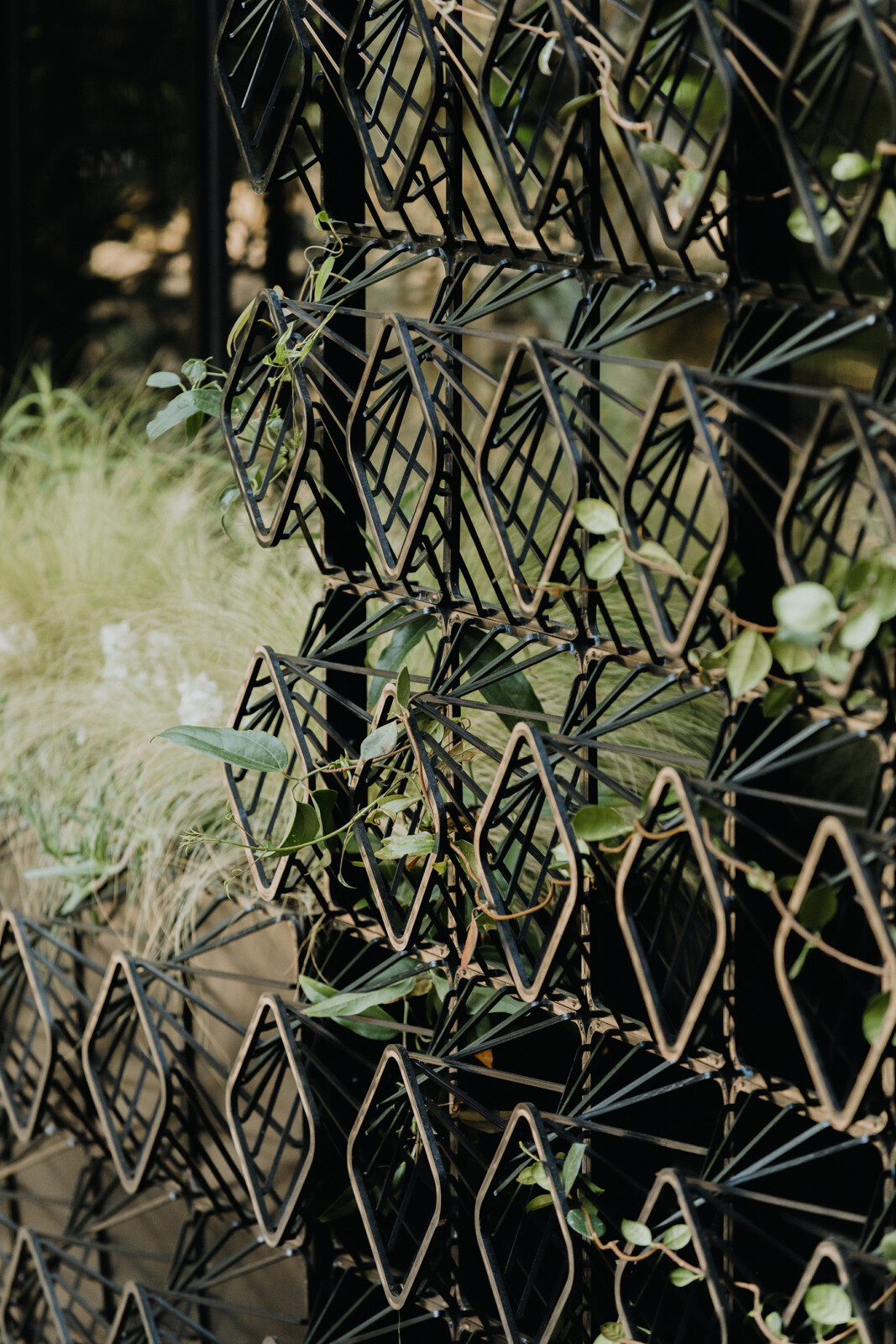
BIOPHILIA – RESEARCH DOCUMENT
21-08-2024Biophilic design, rooted in the innate human connection with nature, has gained prominence in the field of architecture and design. A growing body of research explores the benefits of biophilic design which emphasises its impact on human health, productivity, and overall wellbeing. Drawing on references from interdisciplinary studies, GMS delves into its origins and sheds light on how incorporating natural elements and fractal geometry into their work that contributes to creating a harmonious relationship and connection between people and their surroundings plus a sense of connection to the outdoors within indoor spaces.
In 1964, the German social psychologist Erich Fromm first introduced the concept of “Biophilia” and used the term biophilia to describe people’s innate need to be in close contact with nature (Gunderson et al,2014). In 1984, following the publication of Biophilia by biologist Edward Wilson, the concept of “Biophilia” began to spread and become popular (Wilson et al, 2021). Wilson emphasises the emotional attachment of humans to nature and Wilson’s biophilia hypothesis proposes that our sensory systems developed heightened sensitivity to living and life-like stimuli of the natural world (Wilson, 1984).
Kaplan and colleagues proposed that inherently fascinating visual stimuli in natural landscapes, like vegetation, wildlife, and “the motion of leaves in the breeze” (Kaplan, 1995, p. 174), capture the attention of our visual system (Berman et al., 2014/ 2008, Ulrich & Parsons, 1992). This body of work suggests that within nature humans are more likely to orient and attend to these “soft fascinations” (Kaplan, 1995, p. 174) associated with living objects.
The fundamental principle of biophilic design involves incorporating natural elements, such as plants, water features, and natural light, into the built environment (Kellert et al., 2008). The concept of biophilic design encourages the use of natural elements and processes in the built environment as inspiration for design (Kellert et al., 2008). In 2022 Zhong et al proposed a biophilic design framework. In this framework, “nature” in architecture contains 18 elements under three design approaches: “nature incorporation”, employing all sorts of natural elements and processes; “nature inspiration”, mimicking natural shapes, patterns and mechanisms and creating visual or tactile experiences of nature; “nature interaction”, arranging nature-like environments that have survival advantage characteristics. By emulating natural patterns and structures, architects and designers can create aesthetically pleasing and functional spaces (Benyus, 2002). This principle enhances the overall design while promoting a sense of tranquillity and connection to the natural world.
BENEFITS
The biophilia hypothesis suggests that exposure to natural environments contributes to cognitive restoration, stress reduction, and overall psychological well-being (Ulrich, 1983; Kaplan, 1995). Biophilic design, incorporating natural elements into the built environment, has gained traction to enhance occupants’ mental health and productivity (Kellert et al., 2008). The visual appeal of nature, a key component of biophilia, has been associated with positive emotional states (Kaplan and Kaplan, 1989).
Many studies have explained the benefits of biophilic architecture in fulfilling the human-nature connectedness and fostering health, well-being, productivity, biodiversity, and resilience (Africa et al., 2019; Gillis and Gatersleben, 2015; Wijesooriya and Brambilla, 2021). Roger Ulrich’s <Stress Recovery Theory> suggests that interaction with nature can relieve psychological stress and promote positive emotions (Ulrich, 1991). Other research indicates that biophilic architecture patterns contribute to improved mood and overall well-being (Coburn et al, 2019, Ryan et al, 2014, Ryan & Browning, 2018).
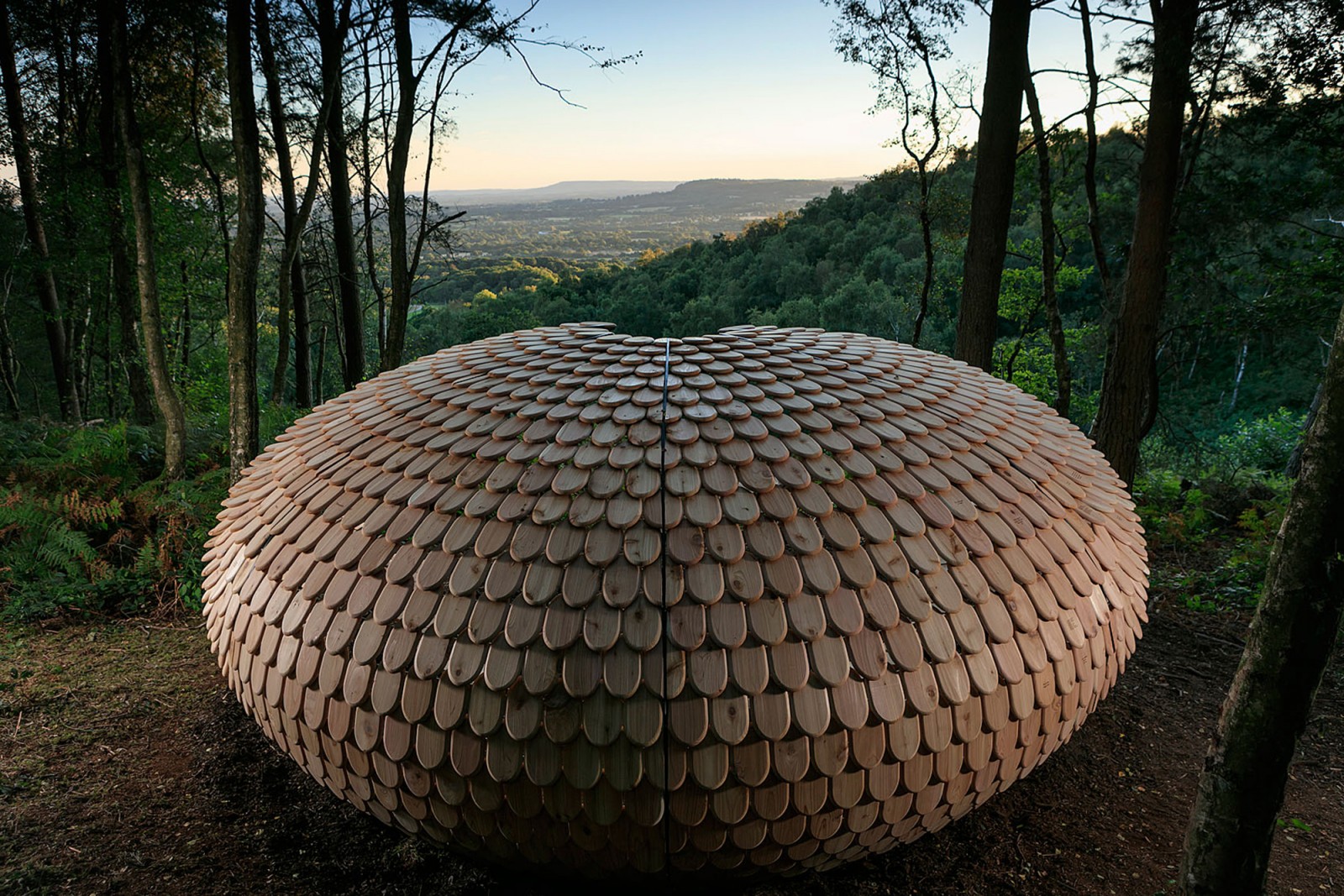
SYMMETRY
21-08-2024SYMMETRY
The natural environment typically contains abundant forms of symmetry. Symmetry in design can be considered a biophilic element, as it mirrors the balance and order found in natural forms. From the bilateral symmetry of leaves to the radial symmetry of flowers, the prevalence of symmetry in the natural world aligns with the human biophilic response (Kellert, 2008). Integrating symmetrical patterns into design inspired by nature may enhance the biophilic qualities of spaces, promoting a sense of tranquillity, visual coherence, order and overall well-being which may amplify the sense of connection to nature within built environments.
Numerous studies in cognitive psychology have demonstrated that humans possess a natural inclination towards symmetrical patterns, which are processed more efficiently than asymmetrical ones (Machilsen et al., 2009; Tyler et al., 2005). Symmetry facilitates the brain’s ability to organize visual information, leading to quicker recognition and enhanced aesthetic appreciation (Makin et al., 2017).
Symmetry is consistently associated with aesthetic preference across diverse domains, including architecture, art, and product design (Reber et al., 2004; Jacobsen et al., 2006). Aesthetic appeal, in turn, is linked to positive emotional responses. Symmetrical designs are often perceived as harmonious, balanced, and pleasing, evoking feelings of calmness and satisfaction (McManus et al., 2011; Barlow and Reeves, 1979).
Research suggests that the preference for symmetry in design transcends cultural boundaries, indicating a potential universality in its positive effects on human perception (Rhodes, 2006; Jakesch et al., 2011).
Given the positive cognitive and affective responses to symmetrical design, the integration of symmetry in various practical applications, such as architecture, urban planning, and user interface design, holds potential benefits for user experience and satisfaction (Conway and Kriegeskorte, 2010; Todorovic, 2006). Incorporating symmetrical elements may enhance overall aesthetic appeal and contribute to the creation of more engaging and positive environments.
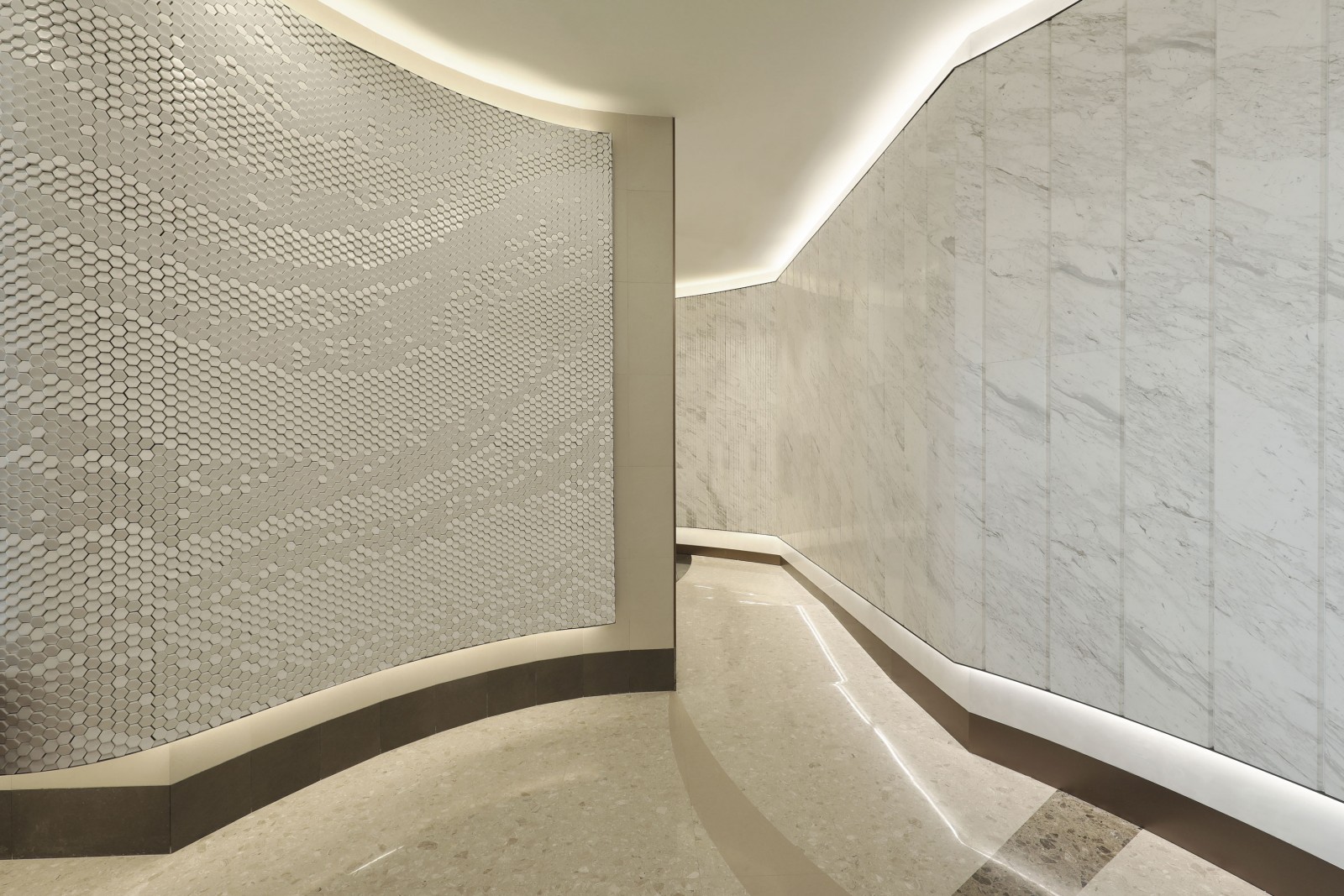
CURVES
21-08-2024CURVES
The preference for curved forms over rectilinear forms in the built environment has been theorised to stem from their prevalence in nature, contributing to a perception of inherent naturalness (Coburn, 2019; Kellert, 2005; Salingaros, 2015). Recent studies in cognitive neuroscience further support this notion by revealing an innate human preference for visual curvature, both in internal spaces (Vartanian et al., 2013) and the furniture within those spaces (Dazkir & Read, 2012; Lee, 2018; Thömmes & Hübner, 2018).
Angular shapes, even when briefly observed, have been shown to elicit a fear response in the amygdala, a brain region associated with emotions (LeDoux, 2003). In her book “Joyful: The surprising power of ordinary things to create extraordinary happiness,” Ingrid Lee, former design director at IDEO New York, states that, round shapes, such as circular or elliptical furniture, promote a lively atmosphere conducive to conversation and impromptu games (Lee, 2018, p. 142).
The significance of geometric contour, specifically curvature, has garnered attention in aesthetics and architectural research. Preferences for curvilinear objects over rectilinear ones are consistently observed in various contexts (Bar & Neta, 2006; Dazkir & Read, 2012; Leder & Carbon, 2005). Additionally, rectilinear shapes and patterns are more prone to eliciting unfavourable emotions when contrasted with their curvilinear counterparts (Hevner, 1935; Lundholm, 1921; Poffenberger & Barrows, 1924).
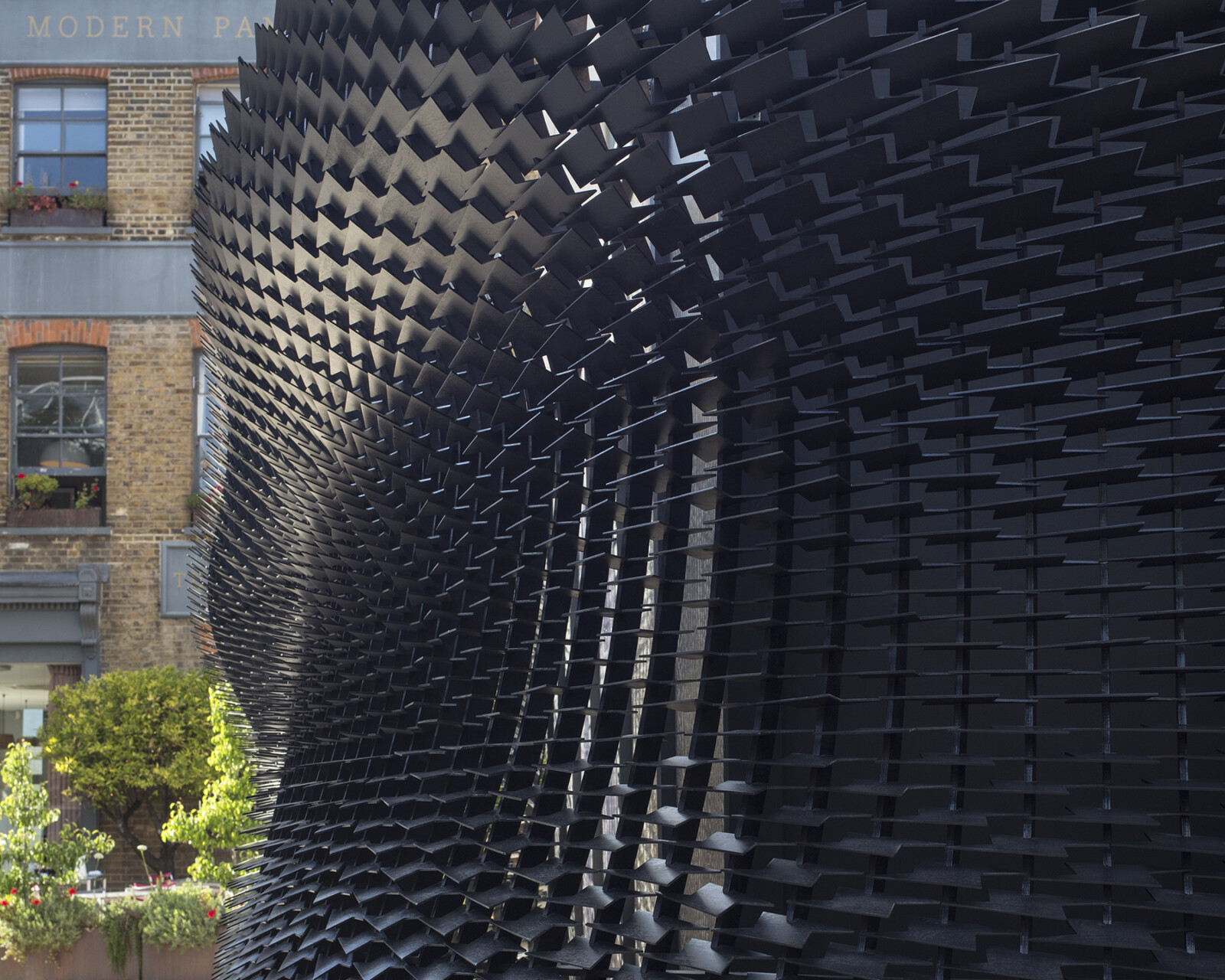
FRACTALS
21-08-2024FRACTALS
Fractals are geometric patterns characterized by self-similarity, repeating structures at varying scales and so create shapes of rich visual complexity (Mandelbrot, 1982). These patterns are prevalent in natural formations such as coastlines, clouds, and foliage (Mandelbrot, 1983). The intersection of biophilia and fractal patterns manifests in the human response to natural scenes rich in fractal geometry. Studies have shown that exposure to nature scenes with fractal-like structures elicits greater positive affect and attention restoration compared to scenes lacking such patterns (Berman et al., 2008). The perceptual fluency of fractals, characterized by ease of processing, may contribute to their aesthetic appeal and stress-reducing effects (Hagerhall et al., 2004). Neuroscientific investigations have revealed that exposure to fractal patterns activates brain regions associated with pleasure and visual processing (Vessel et al., 2012)
Research suggests that exposure to fractal patterns can evoke aesthetic preferences and positive emotional responses in humans (Taylor et al., 1998). The human visual system appears to be finely tuned to detect and appreciate fractal geometry in the environment (Spehar et al., 2003). Whether natural or created, the perceptual experience of human-made environments can be impacted with inclusion of these natural patterns, fractals represent a profound ingredient of the visual experiences of Millers work.
Several authors have speculated about the potential sensory and emotional benefits of naturalistic patterns in architecture, like curvilinear form and fractal scaling (Joye, 2007, 2016; Salingaros, 2007, 2015; Alexander, 2002). Some research suggests that installations of fractal patterns have the opportunity to decrease eyestrain, headache rates, and stress (O’Hare and Hibbard, 2011; Penacchio and Wilkins, 2015; Le et al., 2017) in a large percentage of viewers (Bies et al., 2016; Street et al., 2016; Pyankova et al., 2019) while potentially increasing the aesthetic experience of the space. These positive impacts of viewing fractals can be considered within the context of biophilia (Wilson, 1984) which recognizes the inherent need of humans to connect to nature.
At GM studio fractal patterns can be produced and installed to maximise aesthetic experiences of different spaces depending on the context and setting. The collaboration of design, maths, materiality the hand-made and technology creates ‘fractal composites’ whereby individual objects merge to form an overall 3-dimentional pattern. Inspiration is taken from nature and natural fractal patterns sought from leaves, fish scales and water. There is great versatility in each fractal pattern design and application to accommodate changing spaces and context requirements. The self-similarity inherent in fractal patterns facilitates scalability, which enables GMS designs to adapt seamlessly to different sizes and resolutions.
BIOPHILIA – RESEARCH REFERENCE LIST
21-08-2024BIOPHILIA RESEARCH REFERERENCE LIST
- Gunderson, R. Erich Fromm’s ecological messianism: The first biophilia hypothesis as humanistic social theory. Humanit. Soc. 2014, 38, 182–204.
- Wilson, E.O. Biophilia; Harvard University Press: Cambridge, MA, USA, 2021.
- Wilson, Edward O. (1984). Biophilia. Cambridge, MA: Harvard University Press. ISBN 0-674-07442-4.
- Kaplan,S.(1995).The restorative benefits of nature: Toward an integrative framework. JournalofEnvironmental Psychology,15,169–182.
- Berman,M.G.,Hout,M.C.,Kardan,O.,Hunter,M.R., Yourganov,G., Jonides, J.,etal. (2014).The perception of naturalness correlates with low-level visual features of environmental scenes.PLoSOne,9,e114572
- Berman, M. G., Jonides, J., & Kaplan, S. (2008). The cognitive benefits of interacting with nature. Psychological Science, 19(12), 1207-1212.
- Ulrich & Parsons, 1992
- Kellert, S.R. Dimensions, Elements, and Attributes of Biophilic Design. In Biophilic Design: The Theory, Science, and Practice of Bringing Buildings to Life; Heerwagen, J., Mador, M., Eds.; Wiley: Hoboken, NJ, USA, 2008.
- Zhong,W., Schro ¨der,T.,Bekkering, J.,2022.Biophilicdesign in architecture and its contributions to health, well-being, and sustainability: a critical review. Front. Archit. Res. 11, 114e141.https://doi.org/10.1016/j.foar.2021.07.006.
- Benyus, J. M. (2002). Biomimicry: innovation inspired by nature. New York, Perennial.
- Ryan, C. O., and Browning, W. D. (2018). “Biophilic design,” Encyclopaedia of Sustainability Science and Technology, ed R. Meyers. New York, NY: Springer.
- Coburn, A., Kardan, O., Kotabe, H., Steinberg, J., Hout, M. C., Robbins, A., MacDonald, J., Hayn-Leichsenring, G., & Berman, M. G. (2019). Psychological responses to natural patterns in architecture. Journal of Environmental Psychology, 62, 133 -145. https://doi.org/10.1016/j.jenvp.2019.02.007
- Ryan, C. O., Browning, W. D., Clancy, J. O., Andrews, S. L., and Kallianpurkar, N. B. (2014). Biophilic design patterns: emerging nature-based parameters for health and well-being in the built environment. Archnet International Journal of Architectural Research. 8, 62–76
- Ulrich, R. S. (1983). Aesthetic and affective response to natural environment. In I. Altman, & J. F. Wohlwill (Eds.), Behavior and the Natural Environment (pp. 85-125). Springer.
- Kellert, S.; Heerwagen, J.; Mador, M. Biophilic Design: The Theory, Science, and Practice of Bringing Buildings to Life; JohnWiley: New York, NY, USA, 2008.
- Kaplan, R., & Kaplan, S. (1989). The Experience of Nature: A Psychological Perspective. Cambridge University Press
- Africa, J., Heerwagen, J., Loftness, V., Ryan Balagtas, C., 2019. Biophilic design and climate change: performance parameters
- for health. Front. Built Environ. 5. https://doi.org/10.3389/fbuil.2019.00028.
21-08-2024
- Gillis, K., Gatersleben, B., 2015. A review of psychological literature on the health and wellbeing benefits of biophilic design. Buildings 5, 948e963. https://doi.org/10.3390/buildings5030948.
- Wijesooriya, N., Brambilla, A., 2021. Bridging biophilic design and environmentally sustainable design: a critical review. J. Clean. Prod. 283, 124591. https://doi.org/10.1016/j.jclepro.2020.124591.
- Ulrich RS, Simons RF, Losito BD, Fiorito E, Miles MA, Zelson M. Stress recovery during exposure to natural and urban environments. J. Environ. Psychol. 1991; 11:201–230
- Mandelbrot, B.B. The Fractal Geometry of Nature; WH Freedman: New York, NY, USA, 1982.
- Mandelbrot, B. B. (1983). The Fractal Geometry of Nature. W. H. Freeman
- Hagerhall, C. M., Laike, T., Kuller, M., Marcheschi, E., Boydston, C., & Taylor, R. P. (2004). Human physiological benefits of viewing nature: EEG responses to exact and statistical fractal patterns. Nonlinear Dynamics, Psychology, and Life Sciences, 8(4), 461-484.
- Vessel, E. A., Starr, G. G., and Rubin, N. (2012). The brain on art: intense aestheticexperience activates the default mode network. Front. Hum. Neurosci. 6:66. doi:10.3389/fnhum.2012.00066
- Taylor, R. P., Spehar, B., Wise, J. A., & Clifford, C. W. (1998). Perceptual and physiological responses to the visual complexity of fractal patterns. Nonlinear Dynamics, Psychology, and Life Sciences, 2(3), 265-285.
- Spehar, B., Clifford, C. W., Newell, B. R., & Taylor, R. P. (2003). Universal aesthetic of fractals. Computers & Graphics, 27(5), 813-820.
- Joye, Y. (2007). Architectural lessons from environmental psychology: The case of biophilic architecture. Review of General Psychology, 11, 305–328.
- Joye, Y., & Dewitte, S. (2016). Up speeds you down. Awe-evoking monumental buildings trigger behavioral and perceived freezing. Journal of Environmental Psychology, 47, 112–125.
- Salingaros, N. A. (2007). A Theory of Architecture. Solingen: ISI Distributed Titles.
- Salingaros, N. A. (2015). “Biophilia and Healing Environments: Healthy Principles For Designing the Built World”. New York: Terrapin Bright Green, LLC.
- Alexander, C. (2002b). The process of creating life: an essay on the art of building and the nature of the universe (Vol. 1/2). Berkeley, CA: Center for Environmental Structure.
- O’Hare, L., and Hibbard, P. B. (2011). Spatial frequency and visual discomfort. Vision Res. 51, 1767–1777. doi: 10.1016/j.visres.2011.06.002
- Penacchio, O., and Wilkins, A. J. (2015). Visual discomfort and the spatial distribution of Fourier energy. Vision Res. 108, 1–7. doi: 10.1016/j.visres.2014. 12.013
21-08-2024
- Le, A. T. D., Payne, J., Clarke, C., Kelly, M. A., Prudenziati, F., Armsby, E., et al. (2017). Discomfort from urban scenes: metabolic consequences. Landsc. Urban Plan. 160, 61–68. doi: 10.1016/j.landurbplan.2016.12.003
- Bies, A. J., Blanc-Goldhammer, D. R., Boydston, C. R., Taylor, R. P., and Sereno, M. E. (2016). The aesthetic response to exact fractals driven by physical complexity. Front. Hum. Neurosci. 10:201. doi: 10.3389/fnhum.2016. 00210
- Street, N., Forsythe, A., Reilly, R. G., Taylor, R. P., Boydston, C., and Helmy, M. S. (2016). A complex story: universal preference vs. individual differences shaping aesthetic response to fractals patterns? Front. Hum. Neurosci. 10:213. doi: 10.3389/fnhum.2016.00213
- Pyankova, S. D., Chertkova, Y. D., Scobeyeva, V. A., and Chertkova, E. R. (2019). “Influence of genetic factors on perception of self-similar objects,” in Proceedings of the Psychology of Subculture: Phenomenology and Contemporary Tendencies of Development, (London: Future Academy), 530–537. doi: 10. 15405/epsbs.2019.07.69
- Kellert,S, 2005, Building for Life: Designing and Understanding the Human-Nature Connection, Island Press.
- Vartanian, O., Navarrete, G., Chatterjee, A., Fich, L. B., Leder, H., Modrono, C., … Skov, M.(2013). Impact of contour on aesthetic judgments and approach-avoidance decisions in architecture. Proceedings of the National Academy of Sciences, 110, 10446–10453.
- Dazkir, S. S., & Read, M. A. (2012). Furniture Forms and Their Influence on Our Emotional Responses Toward Interior Environments. Environment and Behavior, 44, 722–732.
- Thömmes, K., & Hübner, R. (2018). Instagram likes for architectural photos can be predicted by quantitative balance measures and curvature. Frontiers in Psychology, 9, Article 1050. https://doi.org/10.3389/fpsyg.2018.01050
- Ledoux, J. (2003) The Emotional Brain, Fear and the Amygdala. Cellular and Molecular Neurobiology, 23, 727-738. http://dx.doi.org/10.1023/A:1025048802629
- Lee, Ingrid Fetell. 2018. Joyful. London, England: Rider.
21-08-2024
- Bar, M., & Neta, M. (2006). Humans Prefer Curved Visual Objects. Psychological Science, 17,645–648.
- Leder, H., & Carbon, C.-C. (2005). Dimensions in appreciation of car interior design. Applied Cognitive Psychology, 19, 603–618.
- Hevner, K. (1935). Experimental studies of the affective value of colors and lines. Journal of Applied Psychology, 19, 385–398.
- Poffenberger, A. T., & Barrows, B. E. (1924). The Feeling Value of Lines. Journal of Applied Psychology, 8, 187–205.
- Lundholm, H. (1921). The Affective Tone of Lines: Experimental Researches. Psychological Review, 28, 43–60.
- Machilsen, B., Pauwels, M., & Wagemans, J. (2009). The role of vertical mirror symmetry in visual shape detection. Journal of Vision, 9(12), 17-17.
- Tyler, C. W., Hardage, L., & Miller, R. T. (2005). Multiple mechanisms for the detection of mirror symmetry in different domains of frequency. Vision Research, 45(10), 1345-1358.
- Makin, A. D., Rampone, G., & Bertamini, M. (2017). Conditions for view invariance in the neural response to symmetry. Psychophysiology, 54(8), 1100-1115.
- Reber, R., Schwarz, N., & Winkielman, P. (2004). Processing fluency and aesthetic pleasure: Is beauty in the perceiver’s processing experience? Personality and Social Psychology Review, 8(4), 364-382.
- Jacobsen, T., Höfel, L., & Spontón, M. (2006). Brain correlates of aesthetic judgment of beauty. Neuroimage, 29(1), 276-285.
- McManus, I. C., Jones, A. L., & Cottrell, J. (1981). The aesthetics of colour. Perception, 10(6), 651-666.
- Barlow, H. B., & Reeves, B. C. (1979). The versatility and absolute efficiency of detecting mirror symmetry in random dot displays. Vision Research, 19(7), 783-793.
- Rhodes, G. (2006). The evolutionary psychology of facial beauty. Annual Review of Psychology, 57, 199-226.
- Jakesch, M., Leder, H., Wiesmann, H., & Forster, M. (2011). Image ambiguity and fluency. PLoS One, 6(7), e21414.
- Conway, B. R., & Kriegeskorte, N. (2010). Organization of human visual cortex for perceptual organization. Journal of Neuroscience, 30(43), 14273-14286.
- Ishizu, T., & Zeki, S. (2011). Toward a brain-based theory of beauty. PLoS Biology, 9(8), e1001187.
- Todorovic, D. (2006). Geometrical basis of perception of certain visual textures: Entropy, symmetry, and skewness. Psychological Review, 113(1), 48-63.